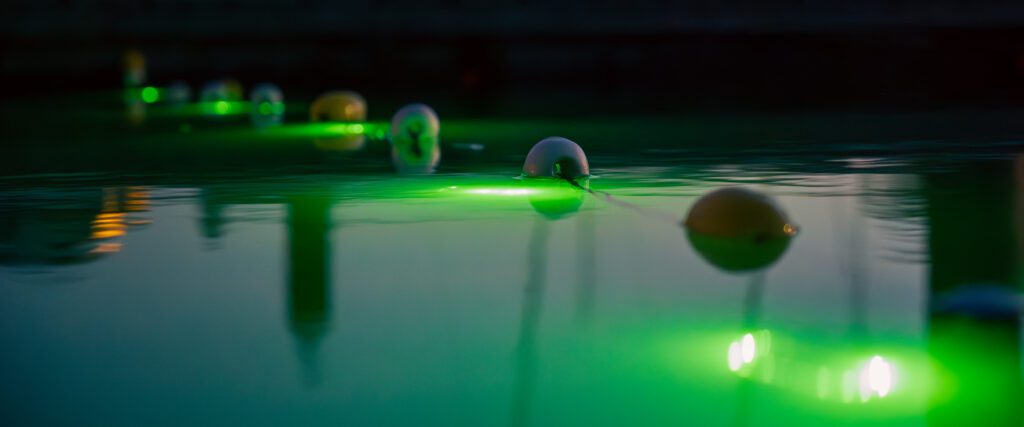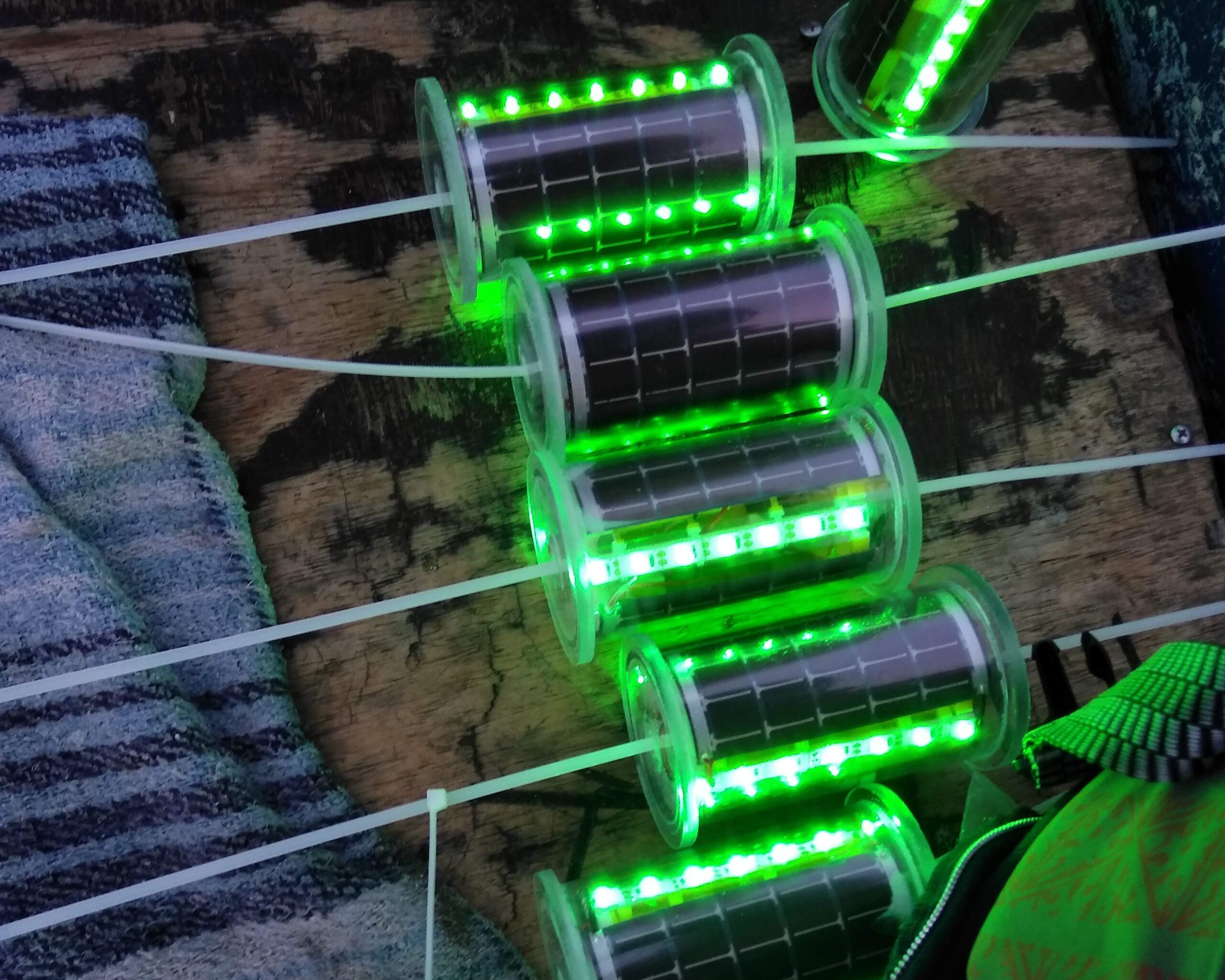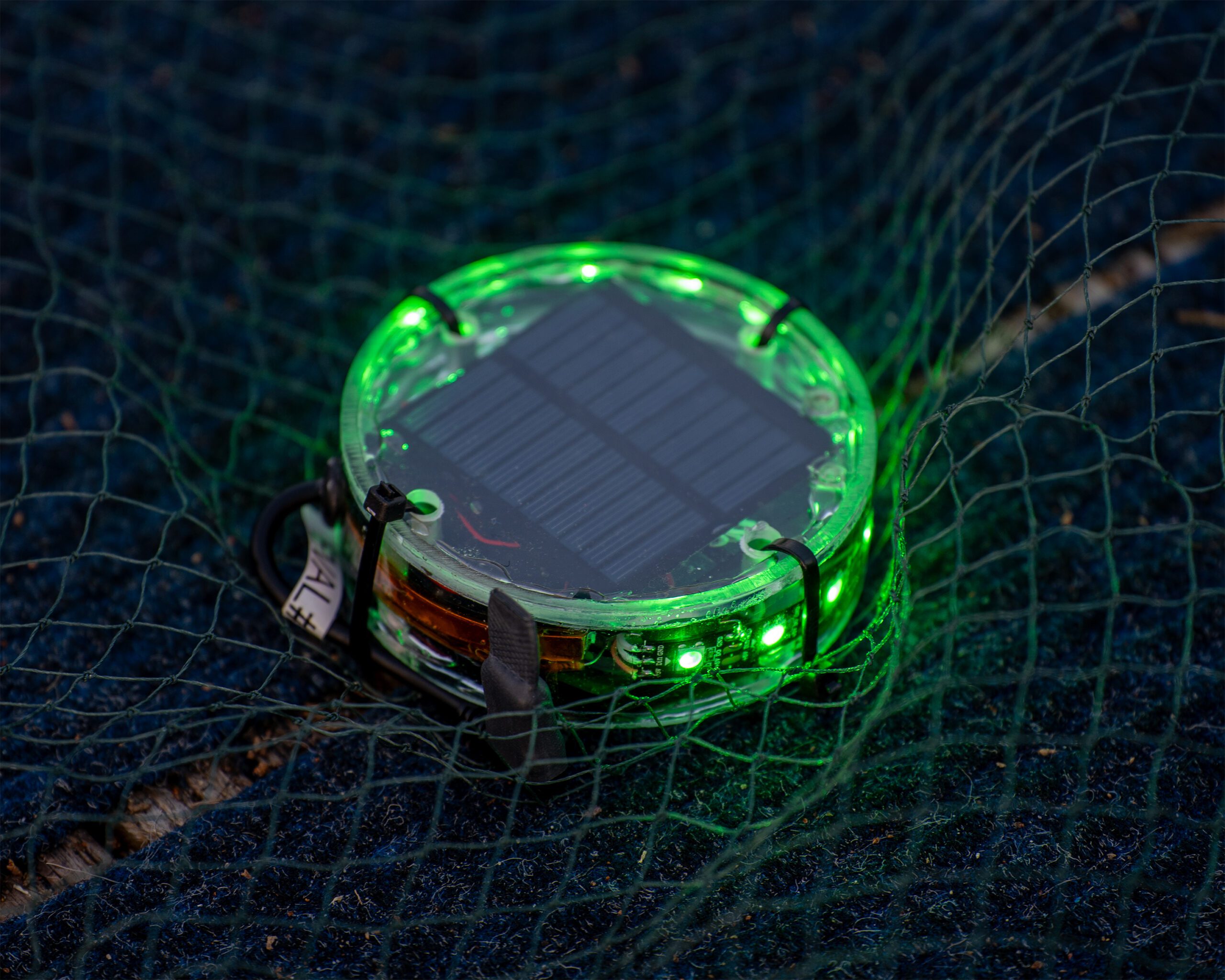Saving marine life and oceans

Arizona State University is on a mission to reduce a problem that is decimating biodiversity in our oceans — bycatch.
Bycatch is the unintended capture of marine life during fishing operations. Studies show approximately 40% or 38.5 million tonnes of what is caught in the ocean gets discarded. Not only is bycatch bad for the planet, it is bad for the fishing business. Fishers spend valuable time and lose expensive equipment disentangling animals in their fishing nets.
Some commercial technologies for mitigating bycatch already exist but they are expensive, difficult to implement, and the batteries are non-rechargeable so they may end up as waste in the ocean.
As part of Arizona State University’s investigation into bycatch reduction technology and animal behavior, they partnered with Synapse to advance their first-generation solar-powered lighted buoy devices called Smart-Nets. These prototypes are designed to be attached onto fishing nets where blinking green LEDs act as a deterrent and repel marine mammals. ASU’s initial studies show that net illumination decreases bycatch by 63%.
“A healthy ocean means a healthy planet and that also means healthy people,” explains ASU professor Dr. Jesse Senko.
Advancing the prototype
In three months, we developed and executed a plan that delivered 100 devices which were designed to be more robust and could be assembled at a lower cost with off-the-shelf parts. We also collaborated with ASU on a new open source hardware design that can be utilized by universities and fishers globally.
ASU is planning to test the new lights in Mexico’s Gulf of California and share Smart-Nets with their study partners around the world.
Winner of Tech4Positive Futures 2023
Our partnership with ASU and the collaboration on Smart-Nets began as a passion-driven idea that our team entered into Capgemini’s Tech4PositiveFutures (T4PF) Competition — and it made quite the splash! Catch more details about the Smart-Nets team’s journey through T4PF here.

“We’re entering a world where we have seen the success of mission-based companies that make products for sustainability. It’s our hope that this becomes a mission-based effort that provides the lights to fishing communities and allows them to make the lights locally, thereby positively impacting the local economy twice.”
Dr. Jennifer Blain Christen, ASU, Associate Professor of Electrical Engineering

Challenge
A new generation of devices
Arizona State University needed to test their prototypes on many different types of equipment in a variety of ocean basins across the world to determine their efficacy in various water types. The first-generation Smart-Nets were built by hand at ASU’s BioElectrical Systems and Technology (BEST) lab. While they provided great trial data, the prototypes were assembled one by one with lengthy fabrication that required highly skilled researchers. With resources stretched thin, ASU needed an engineering partner that could modify the design for streamlined assembly so it can be easily replicated across the globe. They also needed expertise to help bring their idea of open sourcing this technology to life.


Solution
More robust and scalable
We strengthened Smart-Nets by making them smaller and filling each unit with epoxy instead of air so they can withstand changes in pressure when submerged underwater. By simplifying the design and reducing the total number of components, we reduced the cost of design and assembly. We also completed a lifecycle assessment for each design decision to ensure that the design would have minimal environmental impact.
To turn ASU’s idea of open source technology into a reality, we packaged the hardware, firmware, and build instructions into a repository for easy sharing. We also purposely created a scalable design with simple components that can be easily sourced so that even non-experts can make these devices in a non-industrial setting.
Outcomes
Global impact
By making Smart-Nets more durable, low cost, easy to assemble, and open source, these devices are better prepared to be scaled globally. Smart-Nets has the potential to preserve biodiversity in our oceans which will benefit fishing communities and the planet.
We are helping realize ASU’s vision of empowering communities around the world to adopt this technology so they can assemble devices and further support their local economies.


“Combined with their expertise in hardware and open source engineering and their commitment to conservation, we knew that Synapse was the right partner to bring the Smart-Nets prototypes to product realization.”
Dr. Jesse Senko, ASU, Assistant Professor and Senior Sustainability Scientist

Nothing but Smart-Nets
Arizona State University has big and ambitious aspirations. They want to enable global adoption of this technology, influence public policy, and help create new standards for how people interact with the ocean.
To reach those objectives, the goal for them now is to test the devices over the course of a normal fishing season so teams around the world can get real data and analyze how effective these devices are at reducing bycatch.

Dive into episode 16 of the Hardware to Save a Planet podcast to hear more about Smart-Nets from Dr. Jennifer Blain Christen and Dr. Jesse Senko.